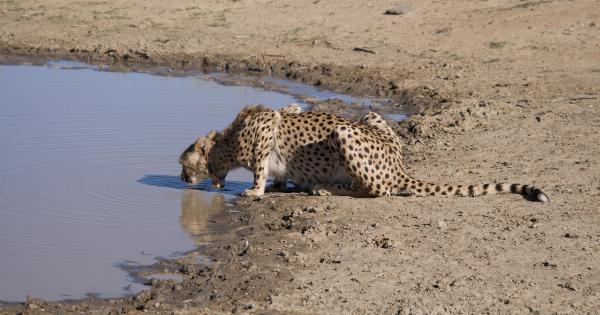Jet circles are a fascinating phenomenon that occurs in the world of aviation. These circles, also known as contrail circles, are formed when an airplane exhaust releases hot gases into the cold upper atmosphere.
The water vapor in the exhaust condenses into ice crystals, forming the distinctive circular shape. While jet circles may seem like a simple byproduct of air travel, they possess several unique features that make them worth exploring.
The formation of jet circles
The formation of jet circles begins with the exhaust gases released by an airplane engine. These gases contain water vapor, which is invisible in its gaseous state.
However, at high altitudes where the temperature is significantly lower, the water vapor rapidly cools and condenses into ice crystals. These ice crystals then form the characteristic white trails, or contrails, that we often see in the sky.
When an airplane is flying in specific atmospheric conditions, these contrails can start to form circular patterns. This is due to the prevailing winds, which can create a circular flow of air around the contrail.
As the contrail continues to expand and blend with the surrounding air, it eventually forms a distinct circular shape, known as a jet circle.
The significance of jet circles
Jet circles hold significant value in the field of aviation and climate research. These circles provide valuable insights into the behavior and characteristics of air masses at high altitudes.
By studying the formation and patterns of jet circles, scientists can gather data on atmospheric conditions, including temperature, humidity, and wind patterns. This information is crucial for weather forecasting, understanding climate change, and tracking air pollution.
Furthermore, jet circles also serve as visual indicators of air traffic. In heavily congested airspaces, the presence of numerous contrails and jet circles can indicate a high volume of air traffic.
This information helps aviation authorities manage and regulate air traffic effectively, ensuring safe and efficient flights for all.
The aesthetic appeal of jet circles
While the scientific significance of jet circles is undeniable, they also hold a certain aesthetic appeal. Contrails and jet circles often create stunning visual displays in the sky, particularly during sunrise or sunset.
The interplay of light and shadow with the white trails can result in breathtaking and picturesque scenes.
Photographers and aviation enthusiasts often try to capture these visuals, appreciating the ephemeral beauty that jet circles offer.
The unique patterns and shapes formed by the circular contrails add an artistic element to the sky, transforming it into a canvas for nature’s beauty combined with human ingenuity.
The environmental impact of jet circles
While jet circles are a captivating natural phenomenon, they also have environmental implications. The formation of contrails, which eventually lead to jet circles, is associated with the release of greenhouse gases and pollutants from aircraft engines.
These emissions contribute to global warming and air pollution, impacting the Earth’s climate and air quality.
As air travel continues to grow globally, the number of contrails and jet circles will inevitably increase.
This highlights the need for sustainable aviation practices, such as the use of cleaner fuels, improved engine designs, and more efficient flight routes. By mitigating the environmental impact of air travel, we can enjoy the beauty of jet circles while preserving our planet for future generations.
The future of jet circles
The exploration and understanding of jet circles are ongoing fields of research. Scientists continuously strive to uncover more about the characteristics and behavior of contrails and their circular formations.
Studying the evolution and persistence of jet circles can lead to advancements in weather prediction models, climate change analysis, and aviation technology.
Additionally, advancements in satellite technology and remote sensing techniques enable more comprehensive observations of jet circles from space.
Satellites equipped with specialized instruments can monitor and measure the extent and properties of contrails and jet circles on a global scale. These observations provide valuable data for climate scientists and researchers studying the impact of aviation on the environment.
Conclusion
Jet circles are a captivating feature that highlights the intersection between human activity and the natural world.
These circular contrails not only add beauty to our skies but also provide valuable information for climate research and aviation management. As we continue to advance our understanding of jet circles, it is essential to prioritize sustainable aviation practices to minimize their environmental impact.
By appreciating the beauty and studying the science behind jet circles, we can maintain a delicate balance between progress and preservation.































